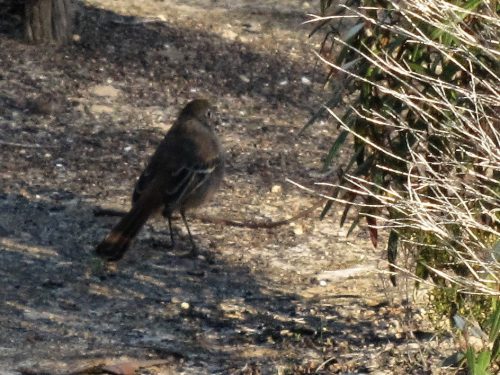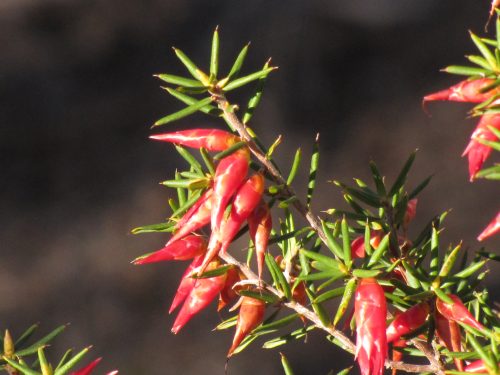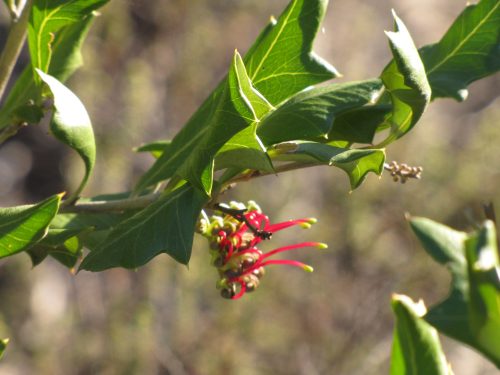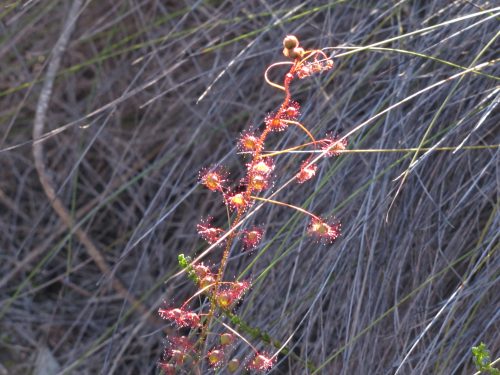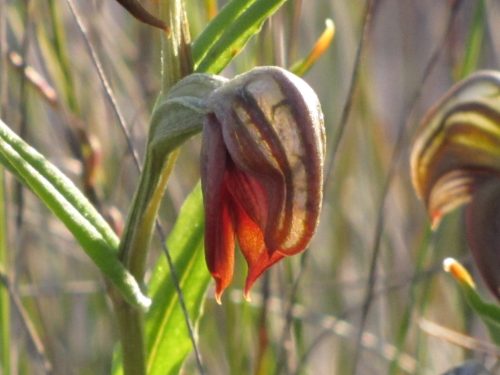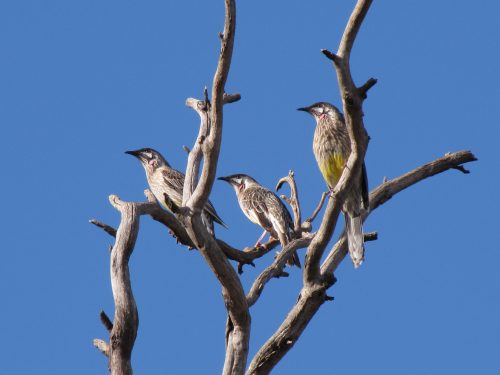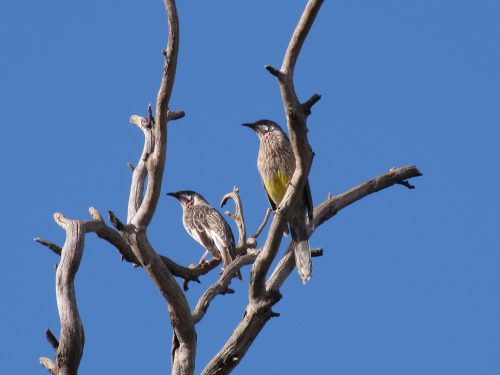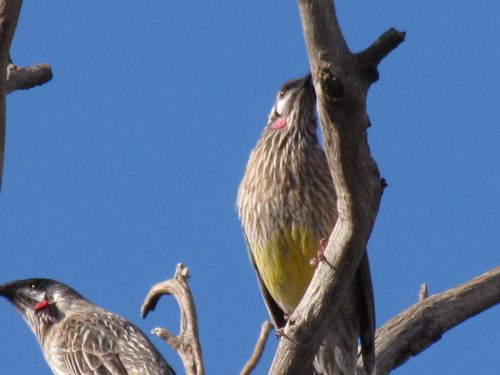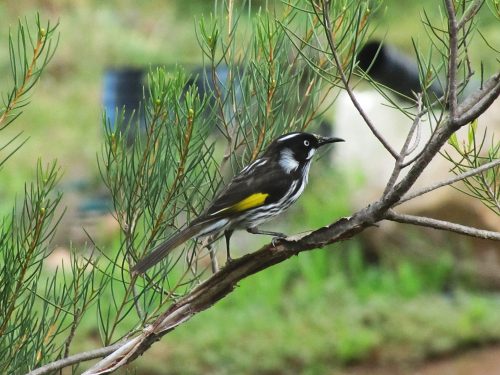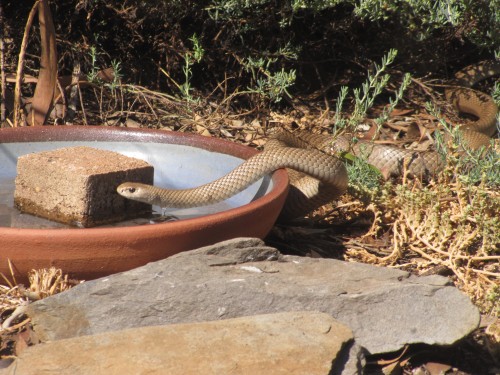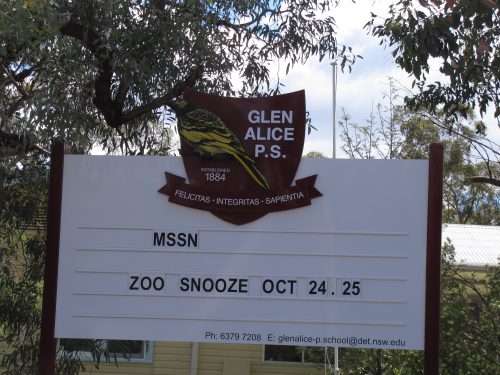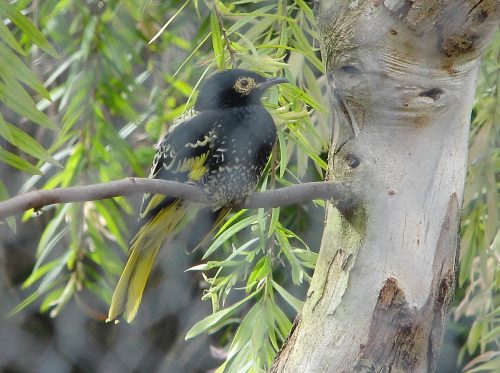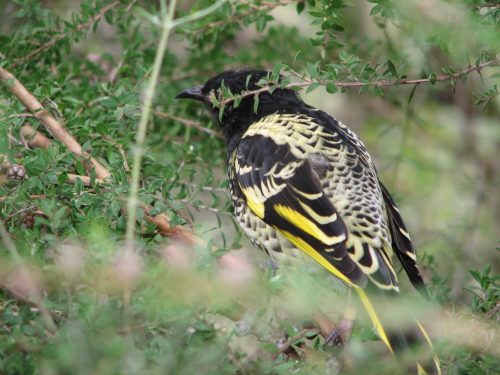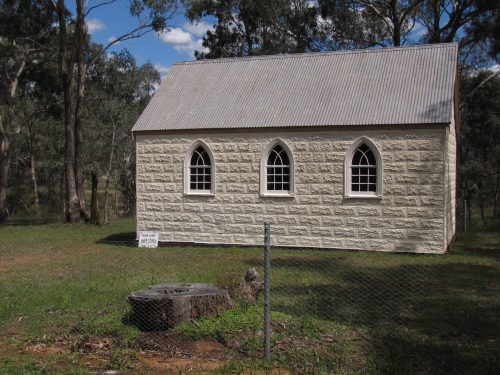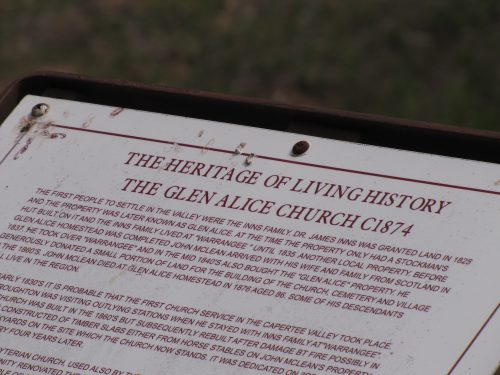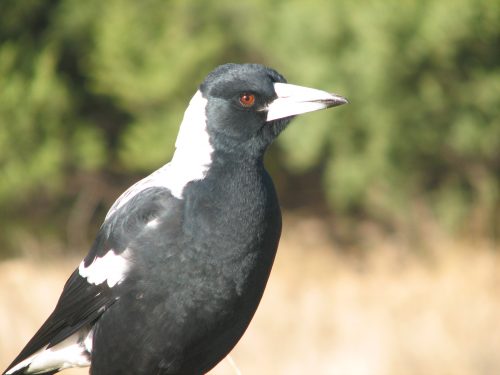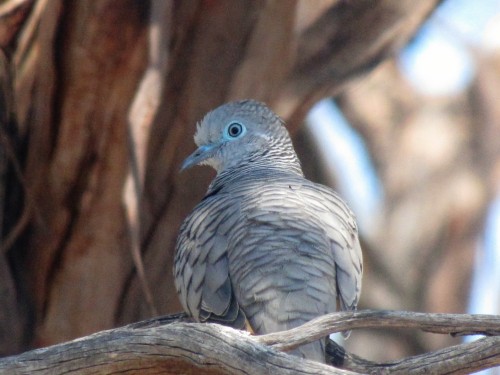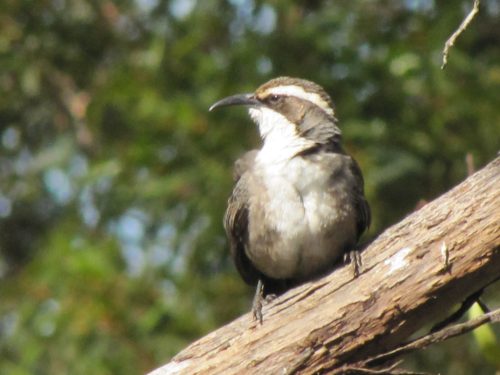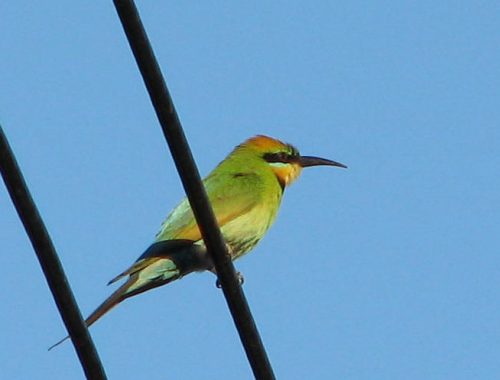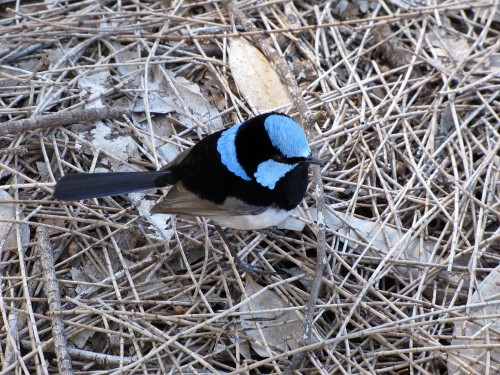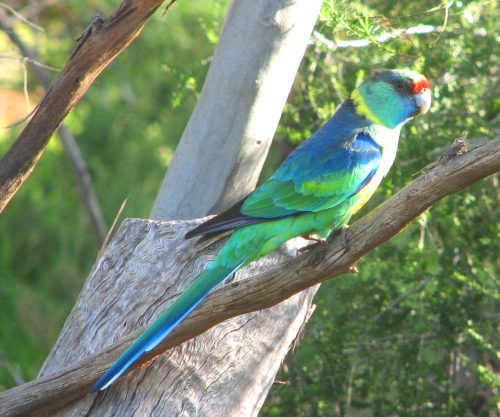A visit to Monarto Conservation Park
A few months ago my wife and I paid a visit to the Monarto Conservation Park in South Australia. This park is south-east of Adelaide and south-west of Murray Bridge where we live. It is about a twenty-minute drive from home. The park is mainly mallee scrub but it contains a good range of small and medium-size native wildflowers, some of which I have shown in the photos below.
On the day we visited, I did not see or hear all that many birds. This is not unusual; some days are like that and very few are seen, while other days you don’t know where to look first – there are so many birds to watch. On this occasion, the only bird I managed a reasonable photo of is the Southern Scrub-robin shown in the photo above. I have found this species to be a somewhat shy bird that skulks in the undergrowth. I followed this individual for about five minutes before it disappeared from view. I could hear it – and others – calling from time to time, but none of them came out in the open to enable a better shot.
This park boasts a wide range of native Australian wildflowers. There always seems to be something flowering, so honeyeaters are common in the park. One can also expect to see, or hear, both types of Pardalote, several species of pigeons, parrots and lorikeets, as well as the elusive Shy Heathwren. Fairy-wrens are also common in the park, as are several species of birds of prey, usually seen soaring overhead. You can also see Australian Magpies, Grey Currawongs, Little Ravens, Grey Butcherbirds and several kinds of swallows.
Access to the park is via Ferries-McDonald Road, a sealed road off the South-eastern Freeway. There is a carpark on the right as you travel south. There are no facilities in or roads through the park, but there is a well-defined walking track starting at the carpark. This is an easy 45-minute walk through a variety of habitats in the north-eastern corner of the park. All of the photos featured today were taken along this walking track in early July of 2017.
I was swooped by a wattlebird
On our trip to Sydney last week, we stopped for a brief rest at the Wagga Wagga Botanic Gardens. This is one of our favourite stopping places on our way from home in Murray Bridge, South Australia, when we are going to Sydney to visit family. On this occasion, we stopped there to have morning tea, and to change drivers.
The botanic gardens in Wagga Wagga have a good representative range of both Australian and exotic plants. The gardens are beautifully set out with plenty of areas of lawn for visitors to have picnics. The good range of plants means that visitors can see something flowering at most times of the year. This also means that there is also a good range of birds present in the gardens and the surrounding environment no matter when one visits.
On this occasion, we were somewhat pressed for time, so I only had the chance to make a small list of the birds I saw. I didn’t even get my camera out, so the photos in today’s post were taken a few weeks ago near our home. I was in the middle of having a cup of tea and looking around at the flowering Grevilleas and Callistomens in the Australian Native Garden section.
I saw a Red Wattlebird land in the bush next to me. I thought it was about to feed on the many flowers in this bush. Instead, as it perched there, it screeched at me – as if it was growling at me. It flew off briefly, returning very low over my head and clacking its beak as it again flew into the bush. It repeated this action several times, each time swooping low over my head. It seemed to be irritated by my presence.
Its next action revealed its true intention. A small crumb from my piece of cake fell to the ground. Immediately, the Wattlebird swooped down and picked it up. It was obviously calling to me to feed it some cake. I guess many visitors do feed the birds during their picnics. In Australia, this is discouraged because many forms of human food are actually harmful to our birds. There is no reason to feed our birds because they have access to a wide range of natural foods.
The most interesting thing about this close encounter was that this individual had learned to swoop humans in order to get food handed to it. I have been swooped by Wattlebirds before, but it is a fairly rare occurrence in my experience.
Good birding,
Trevor
Further reading:
- The problem of swooping magpies
- Do Blackbirds swoop? Dealing with aggressive birds.
- Pesky Plovers – dealing with swooping birds
Upset New Holland Honeyeaters
Last week my wife and I were sitting on our back veranda having lunch. We were enjoying a brief burst of spring weather and the sun was most welcome. We have had a long stretch of very cold, showery, wintery weather for well over a month, so the change was very much appreciated.
I often have my binoculars at the ready in case I want to check out any of the many birds we see in our garden. Sometimes I even have my camera at the ready, too. As we were enjoying a cup of tea after lunch, a flock of about a dozen New Holland Honeyeaters set up a terrible racket in the bushes about ten metres from where we were sitting. I immediately thought that their warning calls meant that there was a bird of prey in the sky overhead, or else it was in the trees nearby.
On looking around, and checking the sky, I could not see any evidence of anything they could be getting upset over. All of the honeyeaters kept calling and fluttering around, obviously quite agitated by something on the ground. I cautiously walked towards them. They took no notice of my presence and kept calling loudly.
Snake!
A metre long Eastern Brown Snake was trying to stay inconspicuous in the shadows, but I caught a glimpse of it as it made its escape into the undergrowth – and away from the keen eyes of the resident honeyeaters. I slowly made my retreat, intent on not getting too close to one of the world’s deadliest reptiles right there in our garden.
Every summer we usually see one or two Brown Snakes in our garden, on our five-acre property, or crossing the road leading to our home. We usually give them a wide berth when we see one and never try to get too close. They don’t bother us and we don’t bother them. I prefer to let them be because not only are they protected under our laws, they also do us the service of keeping mice and rat numbers down to a manageable level. My only concern was that this was rather early in spring for our first sighting; summer won’t start until December.
I guess that we will have to keep an eye out for them in the coming months. Proceed with caution.
Further reading:
- Bird baths are not just for birds – this post includes photos of a Brown Snake at one of our bird baths,
- Brown Snakes and Woodswallows
- Beautiful birds, leaping lizards and slithering snakes
Glen Alice Primary School and birds
In recent posts here I have written about our visit to the Capertee Valley last year. You can read about this visit by clicking on the links in the “related reading” section below.
In my last post, I highlighted the birds I saw in and near the small village of Glen Alice. We had afternoon tea there and this gave me the opportunity to do some birding. As we were driving through the town, we went past the local primary school. I was really taken by the school emblem or crest on their notice board, and I actually backed up the car and took a photo of it. Not many schools feature a bird as their school emblem. Good for them.
Zoo Snooze
The sign also informs the community that the children were going on a camp-over ‘Zoo Snooze’ on the following two days. This was probably at the Western Plains Zoo near Dubbo. The zoo is just over 200km to the north-west and it often caters for overnight stays by school groups.
Threatened birds
The fact remains that this valley is one of the strongholds of the Regent Honeyeater, one of our most threatened species of birds here in Australia. This interesting honeyeater is found throughout the Capertee Valley where suitable habitat exists. Sadly, much of its natural habitat has been cleared for farming over the years. Its natural range extends from south-east Queensland, through eastern New South Wales and into north-eastern Victoria. Nowhere is it common and conservation efforts have a focus on preserving this species and increasing its preferred habitat through revegetation programmes.
During our time in the Capertee Valley, I was not fortunate enough to see a Regent Honeyeater. In fact, I am sure that it is one species I have yet to see in the natural environment. The photos above and below were taken in a walk-through aviary in the Cleland Wildlife Park near Adelaide. This park is one of several zoos attempting to breed populations of this species, some of which have been released back into the wild.
Related Reading:
- Glen Alice in Capertee Valley
- My first birding visit to Capertee Valley
- Threatened birds of Australia – Regent Honeyeater
- Capertee birder – an amazing collection of articles about the birds of the valley and sound files of some of the birds.
Quaint old church
Near where we stopped to have afternoon tea, there was an old historic church, opened in about 1874. It sat comfortably in amongst the gum trees in a typically Australian bush setting. If I had been involved in building the church, I might have insisted that the windows be made much bigger. In that way, I would have been able to admire God’s amazing creation just outside. Knowing my tendency to get excited about birds, it might have also been a big distraction from what was occurring inside the building, or what was being said. Sigh. (I have been known to actually make lists of birds seen through a church window while the service is in progress.)
The little sign leaning against the wall facing my camera reads “Glen Alice Union Church.” Below the photo of the church, I have included a photo of the sign just inside the fence. I am annoyed that I didn’t capture the whole sign which gives a little of the history of the area.
Bird visitors at my window
Over recent days we have had both hot weather and lovely weather. This is normal for mid-summer days here in South Australia. For any new readers, I live about 80km or an hour’s drive south-east of Adelaide. Summer temperatures are usually in the high 20s or low 30s (30C is equal to 86F). During our worst summer days, temperatures can soar as high as 45C (113F), but thankfully such days only occur a few times every year.
Over recent weeks, many days have been in the mid-20s, which is very pleasant. On such days I love to open the large window next to my writing desk and let the fresh air into my office. If there is a breeze as well, that is an added bonus. One of the side benefits of this arrangement is the easy access to the bird life in our garden. I don’t even have to get up out of my chair to watch the birds. They come to me.
One one occasion, a friendly Australian Magpie (see photo above) sat on the rail of the pergola on this side of the house. He was in full view from where I sat. He suddenly stopped his carolling – our magpies are wonderful songsters – realised I was there and leant forward to get a better view of me. When I chatted with him, thanking him for the visit and the song, he answered me. How lovely.
On several occasions over the last week, one or two Peaceful Doves have alighted in the branches of a nearby tree, coo-ing persistently for about ten or fifteen minutes before moving on elsewhere in our garden. Their soft calls are very peaceful, so they are aptly named.
Only yesterday I had to stop what I was writing and look out to the garden bed next to my office window. A small family of White-browed Babblers were playing around in the bushes there, scolding each other as they scurried here and there. They were joined in this game by several New Holland Honeyeaters, their screeches usually a warning sign that a hawk or eagle is about. I think they were just having fun with the babblers. Even a couple of House Sparrows joined in the fun.
One species we don’t always have around is the Rainbow Bee-eaters, a delightfully named bird with their many-coloured plumage and their liking for catching and eating bees and other flying insects. I smile when I see one sitting in a nearby tree, banging a bee against the branch to dispatch the sting of the bee before swallowing it whole. Yesterday two or three could be heard out of my window while I worked, and later I saw two gliding overhead. Delightful birds, and we miss them when they fly north for the winter.
For many years we never had wrens resident in our garden. They were only occasional visitors from up the hill. Then five years ago on our return from an overseas trip, we were greeted by two Superb Fairy-wrens, one of two local species. They have been a resident breeding species in our garden ever since, producing several broods over those five years. They are so secretive about their nests that I have yet to find one. They have plenty of good bushes around to build their nests. From time to time they will also come by my office, their twittering, tinkling calls easy on the ears as they hop along near my office window, jumping up occasionally to snatch a fly or mosquito silly enough to hang around too long.
I don’t need to have the window open to hear our resident Mallee Ringneck parrots screeching outside as they fly from tree to tree, or over the house, or just sitting in a nearby tree wagging their tails joyfully. This tail wagging is probably a mating display. They have raised several broods successfully in recent years, their nest hollow being only 30 metres from my window.
What birds do you have in your garden?
Please tell me in the comments.
Good birding,
Trevor
